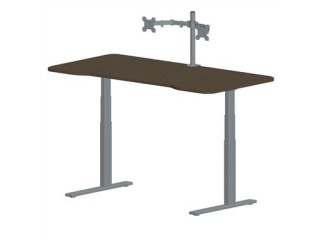Electric scooters: Love or hate them? Here's what you need to know Aziendale
2 years ago Industriale Bari 297 Visto Reference: 58Location: Bari
Prezzo: Contattaci
Electric scooters: Love or hate them? Here's what you need to know
Scooters used to be toys only for children. Their motorized descendants, however, are now popular among adults.
Last year, Americans took 38.5 million trips on shared scooters in more than 100 cities, according to the National Association of City Transportation Officials (NACTO), a nonprofit organization. Those trips accounted for almost half of the 84 million trips – more than doubled from 2017 – taken on “shared micro-mobility” options that also include station-based bikes and dockless bikes.
As people look for ways to get around congested cities faster, scooters have gained in popularity. But their emergence has drawn criticism that the vehicles are risky both for riders and pedestrians.
Some cities, such as Chicago, launched pilot programs for sharing scooters in June, eyeing the potential to ease congestion and pollution brought by cars. Portland, Oregon, launched a 120-day pilot program last year and a one-year program this year that started in April. New York State passed a bill in June to legalize the vehicle, though renting them is prohibited in Manhattan – you have to own one to ride it.
But some cities said no, or at least not now. Last month, Chattanooga, Tennessee, issued a six-month ban of the conveyance. San Francisco and Beverly Hills once took similar approaches. Nashville's mayor called for a ban on the vehicle following the city's first scooter-related death, but the Metro Council rejected the plan - the legislative institute decided to reduce scooter fleets instead.
City officials and residents have conflicting attitudes toward electric scooter. And in many places, its regulation still falls into gray areas.
Why people love electric scooters
You can easily ride a scooter, with a top speed of 15 to 30 mph, to the nearest subway stop a mile away or other destinations 5 miles out, and travel faster than cars during rush hour. Unlike bikes, they can keep you from getting sweaty before you arrive at work or to meet friends. Many people rode scooters in childhood, which makes them familiar and appealing for commuters.
After scooter startup Bird deployed its first fleet in September 2017, bike-sharing companies Spin (acquired by Ford last November) and Lime, and ride-hailing giant Lyft and Uber dipped their toes into the scooter market by launching their own fleets last year. Other key players include Skip and Scoot, which was acquired by Bird in June.
The scooter startups have raised more than $1.5 billion in funding and the global market is expected to reach about $40 billion to $50 billion by 2025, according to Boston Consulting Group.
Scooter hazards: safety and parking
City officials opposing scooters cited safety as their major concern and worry they would block sidewalks if they were parked inappropriately, impeding pedestrians and people with disabilities.
After electric scooters were introduced, several hospitals at various locations saw spikes in scooter-related injuries at their emergency rooms. Since the fall of 2017, at least eight scooter riders have died and 1,500 have been injured, according to Consumer Reports. Emily Hartridge, a TV host and YouTube star, died after her electric scooter crashed with a truck in London. Last week, a person in Atlanta died in a crash with an oil truck while riding a scooter.
Boosted, a startup founded in 2012 that debuted with its flagship electric skateboards, is a newcomer to the market. The company touts its latest product Boosted Rev, which started shipping last month, has “vehicle-grade durability.”
Its E-scooter electric scooter has a top speed of 24 mph, can go up to 22 miles on a single charge and has three brakes, including an electronic one, according to the company. It costs $1,599, compared with Segway and Xiaomi’s scooters that range from $400 to $800.
“We've adopted a lot of the fire safety and impact and durability standards from the automotive industry for electric cars and adopted them to the standards we've built,” said Boosted’s CEO Jeff Russakow, who compared the company’s approach in electric scooters to Tesla's.
Own or share? What's next?
Experts said it is still too early to say whether sharing or owning will prevail.
"When you see that kind of adoption, it's quite attractive to find other forms of business models in order to capture some sort of share," said Zarif. He estimates that within next year, companies will come up with new forms of micro-mobility vehicles other than electric scooters to offer commuters more choices.
Fang said there might be markets for both buying and sharing. But to accommodate the electric scooter ATV and other micro-mobility options, cities need better infrastructure, he said, such as enough bike lanes, which are ideal for scooter riders who might feel unsafe riding with cars that go 25 to 40 miles per hour on main roads but would endanger pedestrians on sidewalks.
Cities are adapting fast though, Zarif argued. “It's getting there. I mean, think of it as when the first car got in the road over a hundred years ago,” he said. “The roads weren't built for the cars, but eventually they started building the right infrastructure."














